A Water hammer occurs when a fluid in motion, usually water, is suddenly stopped or changed direction by a valve, pump, or other device. A pressure wave is created as a result, which travels in these ways. And sometimes, it causes damage to the pipe or its components. This serious problem in plumbing systems especially occurs when high-pressure or fast-closing valves are used. In this blog post, we will explain what causes water hammer, understand its effects, and explore how to prevent or reduce its impact. We will also provide some examples of water hammers in different situations and applications.
Causes of Water Hammer
The sudden change in momentum of the fluid in the pipe causes a water hammer. When a valve closes or opens quickly or a pump starts or stops abruptly, the fluid velocity changes rapidly. This creates a pressure wave that travels back and forth along the pipe until it dissipates.
The pressure wave can be very high, depending on several factors. Some of these factors are explained below:
- The initial fluid velocity: The faster the fluid is flowing in the pipe, the more momentum it has. When the fluid is stopped or changes direction, it has more momentum to lose. So, the pressure wave will be higher at higher fluid velocities.
- The change in fluid velocity: The more the fluid velocity changes, the more momentum it has to lose or gain. The
pressure wave will be higher for larger changes in fluid velocity. For example, if a valve closes completely, the fluid velocity will drop to zero. It will eventually create a higher pressure wave than if the valve closes partially. As a result, the fluid velocity decreases gradually.
- The pipe length and diameter: The fluid will flow faster if the pipe is longer and narrower. As the pressure wave will take longer to travel along the pipe and reflect from the ends. So, a higher pressure wave will occur than if the pipe is shorter and wider.
- The pipe material and elasticity: More energy is required to travel if the pipe is less elastic. The pressure wave will be higher for stiffer and less elastic pipes than for softer and more elastic pipes. For example, metal pipes are stiffer and less elastic than plastic pipes.
- The pipe material and elasticity: It will take more energy to travel if the pipe is less elastic. So, the pressure wave will be higher for stiffer and less elastic pipes than for softer and more elastic pipes. For example, metal pipes are stiffer and less elastic than plastic pipes.
The fluid density and compressibility also depend on the fluid. This means that the pressure wave will be higher for denser fluids than for lighter fluids. For example, water is denser and less compressible than air.
- The valve closing or opening time: If the valve opens in a short time, then the fluid velocity will change suddenly. The pressure will be higher for shorter valve closing or opening times than for longer ones. A solenoid valve, for instance, can close or open in milliseconds. eventually creating a higher pressure wave than a manual valve that can take seconds to close or open.
- The presence of air pockets or other devices in the pipe: Also affect how the pressure wave travels and reflects along the pipe. This can create destructive interference between different parts of the pressure wave. For example, an air pocket can act as a cushion that absorbs some of the energy of the pressure wave. On the other hand, a device like a pump or a turbine can add more energy to the pressure wave, increasing its impact.
Detection and Measurement of Water Hammer
Water hammers can be detected and measured by various methods. It depends on the system’s purpose and the conditions.
Some of these methods include:
- Pressure sensors: These devices measure the pressure at a point in the pipe system. You can install it in strategic locations, such as near valves or other devices that cause it. They can record the pressure variation over time and provide information about the pressure wave. Pressure sensors can be either analogue or digital. And you can connect to data loggers, computers, or other instruments. A trigger alarm system also comes with it, or you can control valves in case of
excessive pressure.
- Flow metres: These are for measuring the flow rate or velocity of the fluid in the pipe system. They can be installed at different points along the pipe to track the fluid flow and detect any changes in velocity. Flow metres can be either intrusive or non-intrusive accordingly. It provides information about the initial and final fluid velocities. So, you can calculate the pressure change using the Joukowsky equation.
- Acoustic sensors: The sensor measures the sound or vibration generated by water hammers. They can be attached to the pipe wall or placed near the pipe to capture the acoustic signal. You will get to know about the location, intensity, and frequency of water hammers.
- Visual inspection: This method involves observing the pipe system and its components for any signs of water hammer. This can include looking for leaks, cracks, dents, deformations, corrosion, or wear on the pipe or its components. Human operators can do it better or use cameras and other optical devices. Damage or malfunction caused by the water hammer will be identified by it.
Effects of the Water Hammer
Water hammers can have various effects on the pipe system and its components. It depends on the intensity and frequency of the pressure wave.
Some of these effects are:
- Noise: A water hammer can produce loud banging or thumping sounds. It can be annoying or disturbing to the occupants of the building or the surrounding area.
- Vibration: This can cause the pipe to vibrate or shake too, which can loosen joints, supports, or hangers. This can lead to leaks, corrosion, or fatigue failure of the pipe or its components.
- Damage: Physical damage to the pipe or its components can also occur due to this. Cracks, bursts, dents, splits, or deformations are some examples. This can compromise the integrity and safety of the pipe system and require costly repairs.
- Cavitation: A water hammer can create low-pressure zones in the pipe. It is where the water evaporates and forms bubbles. These bubbles collapse when they encounter high-pressure zones. As a result, it creates shock waves that erode the pipe wall or valve seat. In the end, the efficiency and lifespan of the pipe system are affected.
- System malfunction: A water hammer can affect the performance and operation of other devices in the pipe system.
This can cause inaccurate readings, false alarms, loss of control, or system shutdown.
Prevention of Water Hammer
Water hammering can be prevented or reduced by using proper design and maintenance practices.
Some of these practices include:
- Reducing fluid velocity: The water hammer is proportional to the fluid velocity. So, reducing it can lower the pressure wave. This can be done by using larger pipes, lower flow rates, or variable-speed pumps.
- Increasing valve closing time: The water hammer is inversely proportional to the valve closing time. So, increasing it can lower the pressure wave. This can be done by using slow-closing valves or manual valves instead of automatic ones.
- Installing air chambers: Air chambers are devices that provide an air cushion to absorb the pressure wave. They are usually installed near valves or other devices that cause water hammers. They consist of a vertical pipe with a cap at one end and a connection to the main pipe at the other end. The air inside the chamber compresses when the pressure wave hits it and expands when it passes by.
- Installing water hammer arrestors: These devices provide a spring-loaded piston or diaphragm to absorb the pressure wave. They are usually installed near valves or other controlling devices. And consist of a sealed chamber with a piston or diaphragm. Which moves back and forth when the pressure wave hits it.
- Installing expansion tanks: These devices provide a volume of water to accommodate the expansion. They are usually installed near the water heater or other heat source. They consist of a tank with a bladder or diaphragm that separates the water from the air. The air pressure in the tank is adjusted to match the water pressure in the pipe system.
- Installing pressure relief valves: Pressure relief valves come with a safety mechanism. Its purpose is to release excess pressure from the pipe system. They consist of a valve that opens when the pressure exceeds a preset limit and closes when it drops below it.
- Installing check valves: This prevents the backflow of fluid in the pipe system. They are usually installed near pumps or other devices that create flow. The valve in it allows fluid to flow in one direction and closes when it tries to flow in the opposite direction.
- Installing bypass lines: These kinds of pipes provide an alternative path for fluid flow in the pipe system. They are
usually installed near pumps or other devices that start or stop abruptly. This opens when the main line is closed and closes when it is open.
- Securing pipe supports: Pipe supports provide stability and alignment for the pipe system. They are usually installed at regular intervals along the pipe. They consist of clamps, brackets, hangers, anchors, or guides that hold the pipe in place. They should be tightened and checked regularly to prevent vibration or movement of the pipe.
- Insulating pipe walls: These surfaces separate the fluid from the surrounding environment. They are usually made of metal, plastic, or other materials. They should be insulated to prevent heat loss or gain, condensation, corrosion, or noise transmission.
Also Read: How to Prevent Burst Pipes
Examples of Water Hammer
Water hammers can occur in various situations and applications involving fluid flow in pipes.
Some examples are:
- Residential plumbing: Water hammer can occur in homes when water-related devices are turned on or off quickly. This can create noise, vibration, or damage to the pipes or fixtures.
- Industrial piping: Water hammers can occur in factories, plants, or refineries. When valves, pumps, turbines, compressors, or injectors are started or stopped abruptly. This can create cavitation or a system malfunction in the pipes or equipment.
- Fire sprinkler systems: A water hammer can occur in buildings. Especially when fire sprinklers are activated by fire alarms or smoke detectors.
- Hydraulic systems: This can occur in machines when hydraulic cylinders or motors are operated rapidly. This can create noise, vibration, damage, cavitation, or system malfunctions in the pipes or components.
- Water supply systems: Water hammer can occur in dams, reservoirs, aqueducts, or pipelines too. It is when gates, valves, pumps, turbines, or generators are opened or closed quickly.
Also Read: How Long Does a Hot Water System Last
Conclusion
A water hammer can be prevented or reduced by using proper actions for the pipe system and its components. And we have discussed some of these common practices. So that you can prevent it with the ideas we have provided in the same blog. Water hammers can occur in various situations and applications involving fluid flow in pipes. And we have also explored many examples on this journey. We hope this helped you solve your problem.

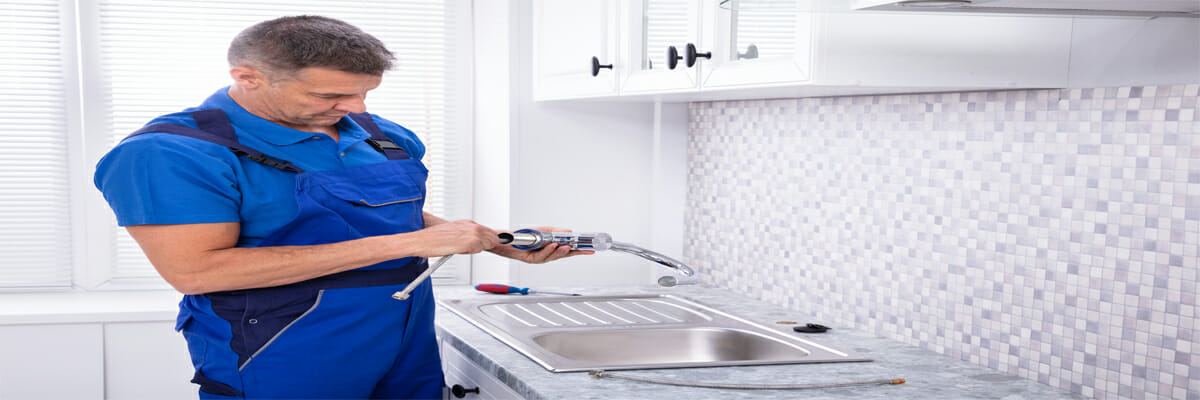
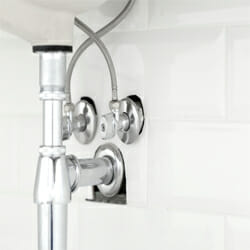 pressure wave will be higher for larger changes in fluid velocity. For example, if a valve closes completely, the fluid velocity will drop to zero. It will eventually create a higher pressure wave than if the valve closes partially. As a result, the fluid velocity decreases gradually.
pressure wave will be higher for larger changes in fluid velocity. For example, if a valve closes completely, the fluid velocity will drop to zero. It will eventually create a higher pressure wave than if the valve closes partially. As a result, the fluid velocity decreases gradually.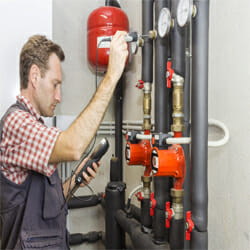 excessive pressure.
excessive pressure.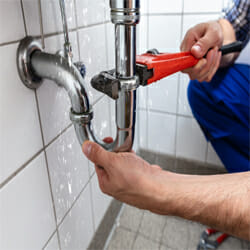 This can cause inaccurate readings, false alarms, loss of control, or system shutdown.
This can cause inaccurate readings, false alarms, loss of control, or system shutdown.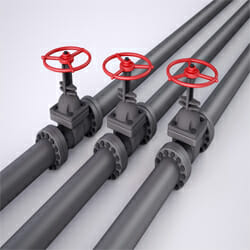 usually installed near pumps or other devices that start or stop abruptly. This opens when the main line is closed and closes when it is open.
usually installed near pumps or other devices that start or stop abruptly. This opens when the main line is closed and closes when it is open. Enquire
Enquire